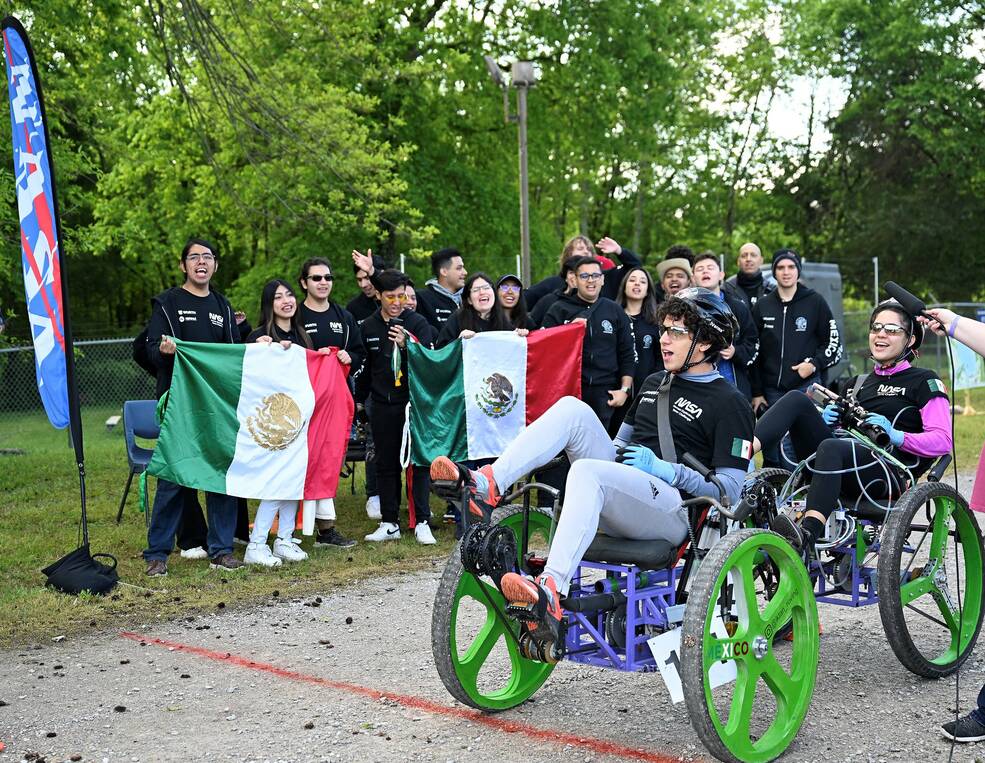Students interested in designing, developing, building, and testing rovers for Moon and Mars exploration are invited to submit their proposals to NASA through Monday, Sept. 21.
Students interested in designing, developing, building, and testing rovers for Moon and Mars exploration are invited to submit their proposals to NASA through Monday, Sept. 21.
The complete details on how to participate in NASA’s Human Exploration Rover Challenge are available online. To learn more, challenge experts are hosting two webinars at 10 a.m. EDT, and again at 6 p.m., on Thursday, Aug. 24. The virtual sessions will outline the proposal processes, and requires pre-registration.
“Our Human Exploration Rover Challenge will focus on an immersive story based on proposed NASA-use cases for crewed and uncrewed rovers during upcoming Artemis missions, including exploring permanently shadowed regions, positioning to recharge batteries, power and data exchange with other surface assets, and storing collected samples,” said Vemitra Alexander, challenge activity lead for NASA’s Office of STEM Engagement. “Students must determine why an autonomous rover exploring the shadowed regions has gone out of contact and, if possible, attempt to repair the robotic rover.”
By participating in this challenge, NASA hopes students will develop a deeper understanding of content and enhance their communication, collaboration, inquiry, problem-solving, and flexibility skills that will benefit them throughout their academic and professional lives. Interested teams should review the handbook for proposal guidelines and new task challenges.
In October, NASA will announce which teams are invited to the U.S. Space & Rocket Center in Huntsville, Alabama, near NASA’s Marshall Space Flight Center, in April 2024 to showcase their submissions. Celebrating its 30th anniversary, the Human Exploration Rover Challenge tasks high school, college, and university students from around the world to design, build, and test lightweight, human-powered rovers on an obstacle course simulating lunar and Martian terrain, all while completing mission-focused science tasks. Once selected, students are required to complete months of design and safety reviews mirroring the engineering design process used by NASA engineers and scientists.
This challenge provides students a chance to engage with NASA’s Artemis program, which includes putting the first woman and first person of color on the Moon. NASA and event sponsors continue to encourage students to push the limits of innovation. The challenge is managed by NASA’s Southeast Regional Office of STEM Engagement at Marshall and is one of eight Artemis Student Challenges. NASA’s Office of STEM Engagement uses challenges and competitions to further the agency’s goal of encouraging students to pursue degrees and careers in science, technology, engineering, and mathematics. To learn more, visit:
-end-
Katherine Brown
Headquarters, Washington
202-358-1288
katherine.m.brown@nasa.gov
Christopher Blair
Marshall Space Flight Center, Huntsville, Alabama
256.544.0034
christopher.e.blair@nasa.gov




























